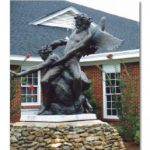Heritage and History
PBC has a rich and vibrant history, past and present.
Rev. Gary P Burton (Retired)
Gary P. Burton is a graduate of Samford University and the New Orleans Baptist Theological Seminary. He and his wife Jerrie have lived their lives in service to Pintlala Baptist Church. Over the years Gary and Jerrie raised a wonderful family and are blessed to be parents, grandparents, and great-grandparents. 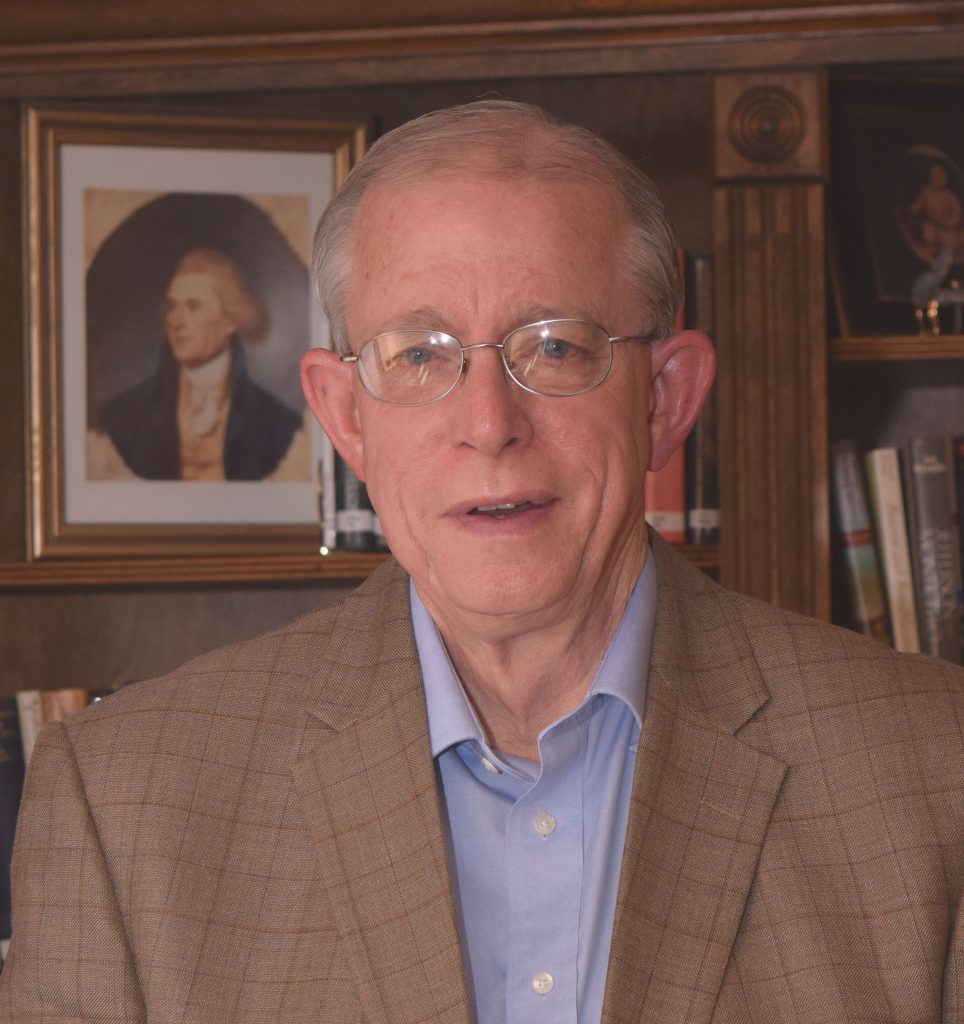
Gary Burton has led and loved Pintlala Baptist Church and its congregation for over 52 years. From January 12, 1972, until his retirement on September 29, 2024, Gary has provided leadership with a forward-looking vision of “what could be” in the life of the Church. Gary’s leadership style has promoted the growth of PBC with the ultimate goal of reaching and touching more lives in positive ways. Throughout his tenure, Gary has been not only a spiritual leader, but also a significant catalyst for beneficial change. His signature phrase “We Proceed On” reflects his belief in God and his hope for the future.
Over the last five decades, Gary’s leadership inspired several important events at Pintlala Baptist Church. In March 1977, the new Howard Birchfield Educational Wing was dedicated. In 1988, PBC celebrated the completion of the Scott Wing and the first visit to Pintlala by then President-Elect George H. W. Bush. Four BASS fishing tournaments played a major toll in financing the construction of a new sanctuary and the creation of the “The Strength of One” bronze sculpture on the church campus. Both stand as imposing structures at the center of the Pintlala community.
Through the years, Gary has worked tirelessly to promote and serve numerous Baptist organizations, at both local and state levels. He has served as the Vice-president of the Baptist Center for Ethics. Gary has also supported the Baptist Health Community as a member of the Hospital Board and the Medical Ethics Committee. He is also a member of the Human Rights Committee of Volunteers of America.
Gary has often stated that living and learning in Pintlala have provided him a profound “sense of place”. His love of history has led him to serve for 21 years as President of the Pintlala Historical Association, a past President of the Alabama Historical Association, and the Friends of the Alabama Department of Archives and History. Gary has also been on the board of the Montgomery County Historical Society. He has done much to document the rich history of the Pintlala Community.
The impact of Gary’s leadership and focus has not been limited to the work and activities of the Church but has extended into the Pintlala Community at large. He has sought to promote harmony and a common purpose among community leaders in order to bring about positive changes in the area. Gary led the local movement to save the historic Pintlala Elementary School from closure. In addition, he has worked to support the Pintlala Volunteer Fire Department, the Pintlala Softball Field, the Pintlala Branch Library, the Pintlala Ledger, various community maintenance projects, and local cemeteries. Gary led the effort to acquire and restore the historic Bethel Cemetery. He has also ensured the maintenance of the cemetery.
And now, over a half-century after his tenure at PBC began, Gary’s signature phrase, “We Proceed On”, is still as relevant and inspiring as it was so many years ago. It’s a simple phrase, just three words but, but it has come to define Gary’s leadership and his servant’s attitude in a way that is truly reflective of the love of Christ.
A Journey of a Generous and Grateful Church
Through the years, our church leaders have proven to be good stewards in the management of debt. Below is a video history of some of those stewards.
Celebrating 55 Years
Celebrating 50 Years
 PBC, Groundbreaking, November 20, 1960
PBC, Groundbreaking, November 20, 1960
In the spring of 1960, a trip to and around Pintlala, Alabama, meant driving past sites that are still present fifty years later: the Pintlala School, a 1922 building that then housed elementary and junior high students; Mosley’s Store, located at the corner of Mobile Highway and the Federal Road; Liberty Church of Christ on Highway 31; and Tabernacle Methodist Church on Federal Road. The community, which then had a population of about 300, also featured some sites that are no longer around: Tom Ganey’s Store, Shack’s Store, and a vacant Grange Hall. Yet what would be most noticeably missing during a 1960 drive through the small community is Pintlala Baptist Church for in the spring of that year, the church was only a dream, alive only in the imaginations of a handful of baptist folks.
That dream of having a Baptist church located in Pintlala began its movement toaward reality on May 15, 1960, at a planning meeting held in the home of Howard and Margaret Birchfield. In attendance at the meeting were the Birchfields, Katherine Massey and her young daughter Judy, and Louise Todd. These and others who participated in the initial planning for a new church in Pintlala were faithful Baptists, and some were members of Ridgecrest Baptist Church in Montgomery.
This small group, after consulting with Frank Hixon, superintendent of the Montgomery Baptist Association and interim pastor of Ridgecrest Baptist, surveyed the Pintlala area in hopes of finding people who would be interesed in participating if a Baptist church were to be established. Joined in this effort by several members of Ridgecrest Baptist, the community-wide survey resulted in the collection of 114 names. Mary Clyde Meadows participated in that survey effort, and she remembers that “canvassing the neighborhood in 1960 revealed tremendous interest in starting a new church. The movement was intense. We were under an imperative. No one comes to Pintlala Baptist Church accidentally.” Her nephew, Herbert, who was then an eleven-year-old, also remembers the survey work: “Going house to house in the community stands out in my mind.”
Just one week after the initial meeting, a second gathering was held in the home of Charles and Mary Clyde Meadows. In attendance were Howard and Margaret Birchfield, Curtis and Katherine Massey, Charles and Mary Clyde Meadows, Jack and Callie Meadows, Barnett and Elizabeth Perry, and Morris and Louise Todd.
This planning group was not only enthusiastic, but organized. They elected Howard Birchfield as their temporary chairman and selected Mary Clyde Meadows as their temporary clerk. Over the course of the next few weeks, they met again and continued their planning, but also welcomed new members to their group and spent time praying.
Only fourteen days after the first meeting, Ridgecrest Baptist voted unanimously on May 29, 1960, to sponsor a mission church in Pintlala, and one week later, on June 5, 1960, the first worship service for this new church was held in the home of Curtis and Katherine Massey. Eleven-year-old Judy Massey (now Judy Burton) remembers the days leading up to that first worship service: “There was excitement, anticipation. I remember getting our home ready for the first service. The chairs were facing the fireplace. We had swept out the carport. The unity of working together was working together was unforgettable.” Barbara Rogers (now Barbara Gass) recalls, “As a twelve-year-old girl, I remember walking in the front door of the Massey home and seeing those marble floors and folding chairs. It was a happy time.”
Forty-eight people attended that first service, which featured a sermon by Bart Kennedy, a student and football player at Howard College, welcoming piano music played by Judy Massey, and hymn singing accompanied by Lera Rogers on the piano. That first Sunday worship service concluded with twenty-one people joining the church. These twenty-one are the charter members of Pintlala Baptist Church. Of that first worship service, Leola Perry (now Lee Searcy) recalls, “I remember the excitement as we gathered at the Massey’s home for the first worship service. We all felt God’s presence, but for me it was so different being in a house and not in a real sanctuary. What a good lesson to learn as a child that when two or three are gathered in God’s name, God is there. I also remember how strange it felt for everybody to join church at the same time. But even then I knew it was a once in a life time experience to be starting a church.”
On the Sundays that followed, other students from Howard College traveled to Pintlala to preach. Wednesday night services were led by lay members. At the first Wednesday night gathering, the new church held a business meeting, voted to establish a budget and visitation program. The members also learned that a meeting place for services had been secured. Howard Birchfield announced that the Montgomery Board of Education had agreed that the new church could use Grange Hall for its gatherings.
On Saturday, June 11, members of the newly established church came together to clean up Grange Hall. Built in the late nineteenth century by local farmers, Grange Hall had over the years served the Pinatlala community as a social gathering place, a one-room school, and living quarters for a school janitor. Following the construction of the Pintlala School in 1922, Grange Hall stood empty and mostly unused until the new church took residence there in 1960. John Meadows, who was eight at the time of the church founding, recalls “cleaning out the old Grange Hall; it was heated by old gas heaters.” In the late 1970s, Grange Hall was moved to Old Alabama Town in downtown Montgomery.
Three months after its founding, Pintlala Baptist Church held its first revival. In early September, the church invited Robert Lowery to preach the revival services. Lowery, a recent graduate of Howard College, a first semester student at New Orleans Baptist Theological Seminary, and pastor of Wilkes Mission in Brighton, Alabama, was assisted in leadership of the revival by Barnett Perry, who led the music, and Becky Alverson, who played the piano.
Following the revival, the church called Lowery as its first pastor. Because he was a seminary student and living in New Orleans, Lowery rode the train every Saturday morning to Montgomery, where church members picked him up. Several church families, including the Birchfields and the Etheridges, opened their homes to the young pastor. Later, Gus and Lora Boyd remolded their home to include an apartment in which the pastor and his family could live.
The next few months were busy ones for the new church. The first Woman’s Mission Society was held on October 4 in the home of Margaret Birchfield, with seventeen in attendance and Anne Wilson presiding. The brotherhood meeting was held later in October, and W.E. Price from Ridgecrest Baptist Church led a study with sixteen in attendance. That same month, a committee was formed to discuss a new location for the church and to determine whether services should continue in Grange Hall or if the members should instigate a building program. The church decided on October 10 to form a building committee with Curtis Massey as its chair, and a budget committee was also formed with Barnett Perry as chair. The first budget was adopted by the church on November 6 and totaled $6,678.00.
On November 20, Pintlala Baptist Church, which now had fifty-eight members, held a groundbreaking ceremony at the church’s future site, property that had been secured from the Montgomery County Board of Education. The program participants at groundbreaking included Lowery; Lewis Marler, pastor of Ridgecrest Baptist Church; J. Frank Hixon, superintendent of missions at the Montgomery Baptist Association; and Gus Boyd, Sr., the oldest member of congregation. The following month, on December 22, church trustees, Boyd, George W. Etheridge, and Howard Birchfield, signed a Certificate of Incorporation, and Pintlala Baptist Church legally became a church.
Margaret Birchfield recalls the hard work involved in those early days of the church: “We worked day and night painting and cleaning the old Grange Hall. I ordered literature and organized teachers. It was amazing how fast things moved the first year, securing land from the Board of Education and erecting the first building.” Her son, Terry, who was then an eleven-year-old, remembers “cleaning the floors in Grange Hall with lye water, waving the funeral home fans, having a watermelon cutting at the home of the Dunns.”
The new church building was completed quickly, with members helping with the painting and construction efforts and with church member Curtis Massey serving as the building contractor. This first building was a simple structure, designed to seat 200 with a raised pulpit, a baptistry, and a choir loft. The building featured inside walls made of concrete blocks and a roofed porch that had square columns on each side of the entrance. On the inside were two side rooms, one that served as a Sunday School room and the other as a bridal room weddings. A pastor’s study, kitchen, nursery, storage area, and equipment room were located behind the baptistry.
One year after the church’s formation, on June 4, 1961, Pintlala Baptist members gathered for a service in which to dedicate its new building. Together they spoke a vow of dedication, and they listened to the choir from Ridgecrest Baptist Church sing, “Forward through the Ages.” Frank Hixon offered a prayer of dedication, and Vernon Davidson preached. The next day, the young church launched its firs Vacation Bible School. Margaret Birchfield served as principal of the school, and forty-two children and nine teachers participated in a fun week of activities. Later that same month, the church elected its first deacons: George Etheridge, chair; Barnett Perry, vice chair; Howard Birchfield, secretary; H. M. Henley; and Gus Boyd, Sr.
During that summer, visitors frequently attended the new church. Other visitors stopped by to look at the new building. Among those who visited the building and walked on the grounds of Pintlala Baptist Church were twin teenage brothers from Birmingham who were spending time with their aunt, Margaret Birchfield. Four years later, as seventeen-year-olds, those boys returned to Pintlala, and together they led a youth revival. Gary Burton preached during that revival, while Lary Burton led the music and Judy Massey played the piano.
Fifty years ago a small group of Baptists gathered to dream of forming a new church in the Pintlala community. That dream moved quickly from hopeful conversation to prayerful action, and within thirteen months of the first planning meeting, members of Pintlala Baptist Church gathered to celebrate and worship in a new building. Today, the church celebrates again and remembers with much thanksgiving the founders, who dreamed, prayed, gave leadership, and worked hard in order not just to build a building but to create a place in which they could faithfully serve God and energetially meet the needs of their community.
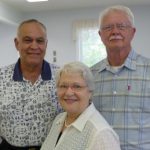
Current Charter Members who were in attendance on Anniversary Sunday, June 2, 2013. Herbert Meadows, Judy Massey, and Terry Birchfield.
Thank you to Pam Durso for compiling all of the above information and pictures.
We Proceed On
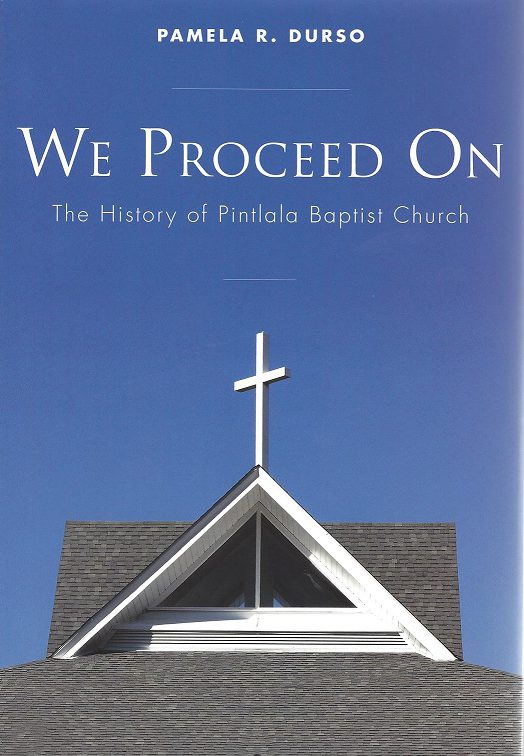 Pintlala Baptist Church has just recently published
Pintlala Baptist Church has just recently published
We Proceed On: the History of Pintlala Baptist Church
by Dr. Pamela R. Durso 2016
The 323 page history is illustrated with numerous images of members and their activities over their 56 year history. The book is a tribute to the PBC family and its place in the Pintlala community.
For the past few decades, I have used this phrase as my closing challenge in newsletter articles. I have preached sermons based on this phrase. It resonates with me, and it describes for me Pintlala Baptist Church. Thus, to title the history of Pintlala Baptist Church “We Proceed On” seems both right and good. The phrase reflects our church’s commitment to move ahead, to keep going forward, to never give up on our journey together, and “We Proceed On” speaks to me of the grace that God has provided all along the way, enough grace for us to proceed on.
If you would like to request a copy of
We Proceed On
please contact the church office at 334-281-9439.
One time donations to PBC may be made here.
Please leave contact information
Strength of One
Everyone is invited to view this magnificent sculpture in the front courtyard of PBC any time.
“As you might suspect, this project was one of my greatest challenges; how to mold into physical form those most elusive qualities of the spirit. In time, it came to me just what I had to do.
The two men represent the ongoing struggle we face while living and growing in our environment with the stronger reaching out to help a weaker brother. Throughout history The Strength of One has often become the salvation of another. To help identify with this tension, I gave the stronger man the personality and physical attributes of the Biblical Peter, and formed the weaker reminiscent of the young Timothy.
The eagle universally represents the highest aspirations of man–soaring far above physical limitations and opening new possibilities. It depicts great power held in balance and its excellent skill in fishing exemplifies the professional ability of great fishermen.
The bass represents itself, for it was from this delightful creature that sprang multiple industries, improved environment, and a new level of out-door recreation to excite and soothe the soul of man.
Running water reminds us of the relentless passing of time; forcing all of us to count our days and seize our opportunities each and every day.
The name The Strength of One reflects our mutual dependence on one another. For today’s weakness is tomorrow’s strength.”
Bass Fishermen of America
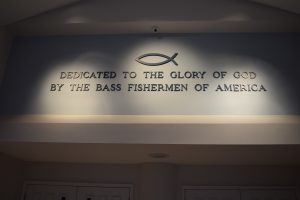 Our affiliation with Bass fishermen is unique and very much appreciated.
Our affiliation with Bass fishermen is unique and very much appreciated.
Pintlala Baptist Church, only a twinkle in the eyes of visionaries in 1960, has by the grace of God been honored by the financial support and generosity of the Bass Fishermen of America. In 1990, a thrilling four-year odyssey began with Bill Schroeder and Ray Scott to escort PBC to a new height of worship and ministry in Pintlala and the entire world.
With the unprecedented cooperation of many dedicated Bass fishermen, fishing industry leaders, and the President of the United States, George Bush, monies were raised to complete a beautiful sanctuary that stands as a powerful testimony to faith in Jesus Christ.
PBC is a grateful and genuinely humble people to have shared in this intense enterprise to glorify our Savior. Thank you, Ray Scott and Bass Fishermen of America.
Mary England Ashely
Bethel Cemetery
Video History
A brief video history of the early years of Bethel Cemetery and the first Pintlala Baptist Church presented by Gary Burton.
<
The Resurrecting of a Cemetery
For many decades the Bethel Cemetery in southwest Montgomery County was itself buried beneath dense layers of undergrowth, shrouded by shrubs and concealed by years of inattention. The thickets and thistles have been removed thanks to volunteers from the Pintlala Baptist Church who have been involved in this restoration project since 1987. In 1998 the church became the owner of this piece of history for purposes of restoration only and is leading the way in uncovering the important symbolism almost lost to a generation which urgently needs reconnecting to its heritage.
As of October, 1999 the Bethel Cemetery, now owned by Pintlala Baptist Church, has been placed on the Alabama Registry of Landmarks and Heritage. A state historical marker is on US Highway 31 at the entrance of the cemetery.
 FAQs (Frequently asked questions)
FAQs (Frequently asked questions)
1. Where is the Bethel Cemetery located?
The cemetery is located one mile north of the Pintlala intersection on the east side of Highway 31. Although several feet from the highway, one can easily see two brick columns which garrison the access road to the cemetery. The signage on each column reads: “Bethel Cemetery 1818.” See below picture for view of entrance from US 31.
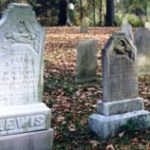 2. Was there a church connected to the cemetery?
2. Was there a church connected to the cemetery?
Yes. The Bethel Baptist Church was constituted on February 13, 1819 (the same year Alabama acquired statehood). Traveling the Federal Road, many settled in Central Alabama attracted by the lure of land, sometimes called “Alabama Fever.” Pintlala was located on the Federal Road which ran from Milledgeville, Georgia to St. Stephens, Alabama, the first capitol of the state.
3. Why was the Bethel Baptist Church important to the religious history of Alabama?
The church had a large attendance until 1837. The Bethel Church was one of four comprising the Alabama Baptist Association which was formed on December 13, 1819. The other three were Antioch, Elim and Rehobeth, all of Montgomery County. In 1837 the church became the focal point of a major split in Baptist life. The issue of missions was the theological point of difference. Church minutes reflect that those who embraced an anti-missions theology voted to exclude “the Missionary Baptist brethren.” The conflict between the Primitive and Missionary approach to the gospel was both regional and national in scope.
4. What makes the cemetery so unique?
It is the site of a marker which commemorates a church split. The stone marker reads:
 Bethel Baptist Church
Bethel Baptist Church
February 13, 1819
Organizers: Elder Electius Thompson,James McLemore, Edward Mosley.
Builder George Shackelford.
Split between Primitive and Missionary 1837.
Site marked November 4, 1923.
In addition the stone was placed and unveiled by the Woman’s Missionary Union of the Montgomery Baptist Association on November 4. 1923. The ceremony was simple:
Service for Unveiling Stone
Under auspices of Women’s Missionary Union of Montgomery Baptist Association
Site of Bethel Baptist Church, near Pintlala, Hope Hull, Alabama
November 4, 1923 at 11:30 a.m.
Miss Olive Rushton, Secretary Treasurer presiding
Devotional: State Convention Secretary Treasurer, D.F. Green
Hymn: “How Firm a Foundation”
Historical sketch: Dr. Frank Shackelford
Unveiling of stone placed by descendants: Mary J. Shackelford, Henry D. Mosley
Benediction
5. Do records of the church and cemetery still exist?
Yes. The Archives and History of the State of Alabama possess the church minutes along with a listing of those buried in the cemetery. Other sources of information are the Pintlala Baptist Church and the Ethel May Todd Alcove at the Pintlala Branch Library.
6. When did the church cease to exist?
The decision in 1837 brought about an inevitable decline in membership. Waning membership characterized the church into the early 1900’s. The 1823 frame building fell into disrepair, was eventually dismantled, and removed by Frank Shackelford.
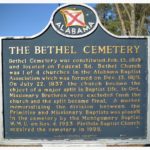 7. Why was the cemetery restored?
7. Why was the cemetery restored?
For three reasons:
We owe a moral debt to those who have gone before us. Although there are theological differences, those buried in the Bethel Cemetery made up the moral and social fabric during the early settlement of the area. We make bad decisions when history is ignored or forgotten. Spiritual values thrive when passed from one generation to another. Baptist missions and evangelism become well defined in the historical context of the Bethel Church. The descendants of those who are buried in the cemetery are few in number or cannot be found.
8. What was done during the restoration?
Many of the gravestones needed repairing and cleaning. A new fence and gate were required. A new historic marker on Highway 31 has been erected. The access road has been improved. Unsightly objects were removed.
9. How is the cemetery maintained now that the project is complete?
Strong financial support was required to restore the cemetery to an honorable level of dignity. Once that level was achieved, moderate expenditures and volunteer involvement have made it possible to keep up the cemetery.
10. Can tours of the cemetery be arranged?
Absolutely! Arrangements by calling the PBC church office @ 334-281-9439.
A List of the known Gravestones in Bethel Cemetery:
Killough, Annie E. (Dec. 12, 1825—June 17, 1908)
Killough, Infant son (Aug. 20, 1848)
Killough, Infant daughter (June 25, 1847)
Killough, John J. (March 4, 1821—June 17, 1852)
Lasiter, Elisha (Jan. 7, 1871—June 17, 1902)
Lassiter, Anne K. Anderson (1847—1931)
Lewis, Allen S. (Sept. 16, 1880—Oct. 14, 1882)
Lewis, Benjamin E. (Jan. 12, 1830—Sept. 27, 1900)
Lewis, Edmund (1792—May 24, 1856)
Lewis, Edmund Jasper (March 25, 1834—April 16, 1874)
Lewis, Elizabeth J. Tally (Apr. 26, 1836—May 13, 1923 )
Lewis, G.W. (1840—September 7, 1864)
Lewis, Infant son (Mar. 7, 1878—Mar. 9, 1878)
Lewis, J.F. (Nov. 16, 1851—June 16, 1897)
Lewis, Miriann (1808—Oct. 12, 1865)
Lewis, Theophilus H. (May 16, 1828—October 29, 1852)
Lewis, W.W. (Aug. 10, 1846—Feb. 12, 1895)
Lewis, William Harrison (Dec. 4, 1859—June 10, 1864)
Lewis, William W. (Aug. 4, 1871—Dec 6, 1871 )
Norman, Annie Lewis (Feb. 21, 1866—Jan. 19, 1946)
Norman, Charles H. (April 19, 1857—Oct. 11, 1949)
Norman, Infant
Norman, Irene (May 17, 1876—Nov. 25, 1879)
Norman, Mary Belle (July 2, 1903—May 24, 1904)
Palmer, Mary Ann (1833—1925)
Parmer, Bethiah B. (1827—Nov. 28, 1844)
Parmer, Bethiah B. (March 20, 1850—Oct. 13, 1856)
Parmer, Chapel L. (1814—April 7, 1844)
Parmer, Elisha William (Oct. 29, 1836—September, 1845)
Parmer, Elizabeth I.H. (1845—Sept. 29, 1857)
Parmer, Emily Arinza (1848—June 27, 1849)
Parmer, Mariah (1796—Nov. 6, 1843)
Parmer, Mary C. (1824—August 22, 1845)
Parmer, Oliver W. (Nov 8, 1869—Feb. 17, 1884)
Parmer, Susanna (1832—Oct. 27, 1856)
Parmer, Virginia A. (1852—Aug. 28, 1853)
Parmer, William Worth (Oct. 30, 1848—July 18, 1901)
Poole, Molly Pettis (1857—1940)
Stacey, Mary Elizabeth Porter (Oct. 1, 1841—Sept. 18, 1905)
Stacey, Tho’s R. (Jan. 19, 1830—Aug. 2, 1901)
Stacey, William V. (Oct. 23, 1866—June 23, 1933)
Stewart, Decatur P. (1824—Oct. 8, 1848)
Tarver, Mollie Lassiter (March 16, 1868—June 17, 1951 )
Thompson, J.W. (Nov. 29, 1866—June 25, 1944)
Thompson, Julia Lassiter(Oct. 27, 1867—Jan. 5, 1955)
Urquhart, Claudia Bell Davis (Nov. 6, 1890—Jan. 14, 1924)
Walters, Charley D. (1880—1958)
Walters, Erdine Taylor (Sept. 2, 1872—July 14, 1962)
Walters, Irvine L. (1898—1922)
Walters, Mattie Lee (1844—1936)
Walters, Sam B. (1873—1953)
Walters, William Allen (June 8, 1870—Jan. 3, 1949)
Whittemore, Churchwell (1812—October 15, 1844)
Williams, Issac H. (Sept. 12, 1813—Nov. 6, 1875)
Williett, Isaac (1807—1857)

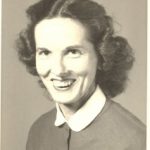 Margaret Miner Birchfield
Margaret Miner Birchfield Judy Massey Burton
Judy Massey Burton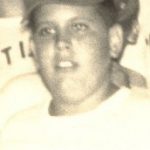 Herbert Meadows
Herbert Meadows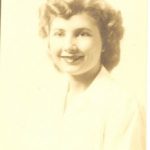 Mary Clyde Meadows
Mary Clyde Meadows First Worship Service, June 5, 1960
First Worship Service, June 5, 1960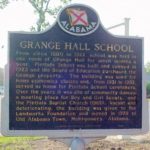 Historical Marker for Grange Hall
Historical Marker for Grange Hall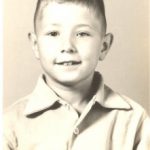 John Meadows
John Meadows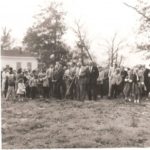 Groundbreaking, November 20, 1960
Groundbreaking, November 20, 1960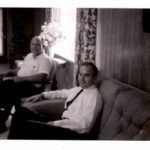 Curtis Massey and Robert Lowery
Curtis Massey and Robert Lowery Dedication of PBC, June 4, 1961
Dedication of PBC, June 4, 1961 Terry Birchfield
Terry Birchfield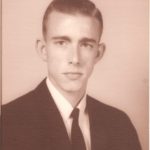 Gary Burton
Gary Burton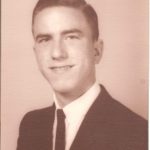 Lary Burton
Lary Burton